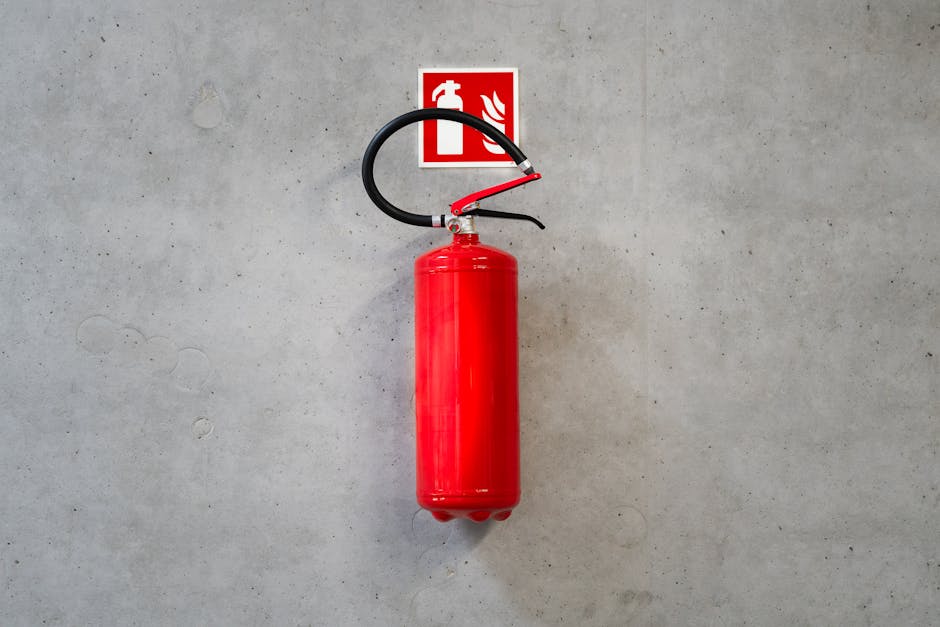
Your garage might be the most versatile space in your home. It’s a workshop, a storage area, maybe even a spot for family hangouts. But overlooked details in garage setups can quietly break fire code—putting your home and loved ones at risk. Fire code violations aren’t just a bureaucratic hassle. They increase the danger of a blaze spreading, make insurance claims difficult, and could invite fines from local authorities. Knowing the most common garage setups that are quietly violating fire code helps you keep your space safe and compliant. If you use your garage for more than parking the car, it’s time to check for these hidden hazards. This guide breaks down seven risky setups, so you can fix problems before they become disasters.
1. Overloaded Electrical Outlets and Extension Cords
It’s tempting to plug in multiple power tools, chargers, and appliances in the garage. But overloading outlets or daisy-chaining extension cords is a classic example of a garage setup that’s quietly violating fire code. Most garages have just a few outlets, but the demand for electricity—especially with modern tools and gadgets—can far exceed what those circuits were designed to handle.
Using extension cords as permanent wiring is a direct violation of the National Electrical Code. Extension cords are meant for temporary use only. Overloaded circuits can overheat and spark, leading to fires behind walls or inside outlets. If you need more power, consider hiring a licensed electrician to install additional outlets and circuits. It’s safer, and it keeps your garage fire code compliant.
2. Storing Flammable Liquids Near Ignition Sources
Many homeowners keep gasoline, paint thinners, or propane tanks in the garage. But placing these flammable liquids near a water heater, furnace, or even a basic electrical outlet is a setup quietly violating fire code. Ignition sources can spark or get hot enough to ignite vapors, turning your garage into a fire hazard zone.
Fire code requires flammable materials to be stored in approved containers, far from anything that could ignite them. Keep these items on a shelf away from appliances, and never store propane tanks inside.
3. Blocking or Removing Fire-Rated Doors
That heavy door between your garage and your house isn’t just for security—it’s a fire-rated barrier. Removing it, propping it open, or replacing it with a regular interior door is a garage setup that’s quietly violating fire code. Fire-rated doors are designed to slow the spread of fire, giving you precious extra minutes to escape.
Fire code requires that the door between the garage and the house be fire-resistant (often at least 20 minutes) and self-closing. If your door doesn’t close on its own, or if you’ve swapped it for a hollow-core door, you risk both safety and code violations. Make sure your fire-rated door is in good condition and closes properly every time.
4. Ceiling Storage That Covers Electrical Boxes or Fixtures
Ceiling racks are a popular garage storage hack. But if your bins, bikes, or boxes block access to electrical panels or light fixtures, you’re violating fire code requirements. Electrical boxes must be accessible at all times for safety and emergency repairs.
Storing items too close to light fixtures can also be a fire hazard, as heat from bulbs can ignite flammable materials. Always keep at least three feet of clearance around electrical panels and lighting. If you can’t reach a breaker or see a light fixture, it’s time to rethink your storage strategy.
5. Unprotected Attic Access Points
Many garages have pull-down ladders or open attic hatches. If these access points aren’t protected with a fire-rated cover, you’re quietly violating fire code. In the event of a fire, unprotected attic openings let flames and smoke spread rapidly to the rest of your home.
Fire code often requires attic access points in garages to be covered with a fire-rated hatch or door. These barriers slow the spread of fire and protect your home’s upper levels. If your attic access is just a piece of plywood or is left open, consider upgrading to a fire-rated solution.
6. Improper Storage of Combustible Materials
Storing cardboard boxes, old newspapers, or piles of clothing in the garage may seem harmless. But these combustible materials can fuel a fire, especially if they’re stacked near electrical equipment or heaters. This is a common garage setup that’s quietly violating fire code, particularly in older homes with outdated wiring.
Fire code recommends limiting the amount of combustible storage in garages. Keep these items off the floor, away from outlets and appliances, and don’t let clutter build up. Consider plastic bins with lids to reduce exposure and risk.
7. Missing or Disabled Smoke Detectors
Many people assume smoke detectors aren’t needed in the garage, but this is a critical oversight. Garages are high-risk areas for fires due to cars, fuel, and electrical equipment. Not installing a smoke detector—or disabling it due to nuisance alarms—is a setup quietly violating fire code in many areas.
Modern smoke detectors are designed to handle garage conditions. Install one that’s rated for use in unconditioned spaces, and test it regularly. This small step can make a huge difference in early fire detection and safety.
How to Make Your Garage Fire Code Compliant
Taking a few simple steps can ensure your garage setup isn’t quietly violating fire code. Start with a walk-through: check for overloaded outlets, improper storage, blocked exits, and working smoke detectors. If you find problems, don’t wait—fix them now. Not only will you protect your home and family, but you’ll also avoid headaches with insurance and local authorities. Staying informed and proactive will keep your garage—and your peace of mind—intact.
What changes have you made to your garage to stay fire code compliant? Share your experiences or questions below!
Read More
9 Things You Should Never Keep In Your Garage But Probably Do
10 Garage Storage Hacks That Are Actually Fire Hazards
The post 7 Garage Setups That Are Quietly Violating Fire Code appeared first on Clever Dude Personal Finance & Money.







